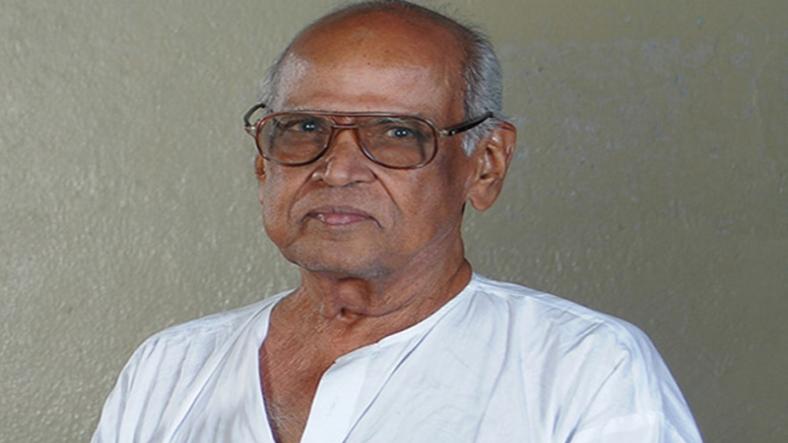Sattiraju Lakshmi Narayana, popularly known as Bapu (December 15, 1933 – August 31, 2014), was a legendary Indian cartoonist, painter, illustrator, and filmmaker. Renowned for his artistic brilliance, Bapu’s work transcended mediums, leaving an indelible mark on Indian cinema, art, and literature. His unique style of storytelling, complemented by his minimalist yet evocative illustrations, earned him critical acclaim and widespread admiration.
1. Early Life and Education
Bapu was born on December 15, 1933, in Narsapur, Andhra Pradesh, into a culturally rich family. His artistic inclination became evident during his school days, where he showcased exceptional talent in drawing and painting.
- Education: He earned a degree in Law from the University of Madras but pursued art and filmmaking as his true calling.
- Artistic Partnership with Mullapudi Venkata Ramana: Bapu formed a lifelong professional partnership with his childhood friend Mullapudi Venkata Ramana, who wrote scripts and dialogues for most of his films.
2. Career as a Cartoonist and Illustrator
Bapu began his career as a cartoonist for popular Telugu magazines such as Andhra Patrika and Bharati. His cartoons were known for their simplicity, wit, and relatability. His illustrations, particularly those depicting women, became iconic for their elegance and traditional beauty.
Key Highlights
- Bapu’s illustrations of mythological characters, especially women, brought a fresh perspective to Indian art.
- His unique style—characterized by clean lines, minimalist features, and expressive emotions—was widely appreciated.
- He illustrated several literary works, including Telugu classics and children’s books, adding a visual dimension to written narratives.
3. Career as a Filmmaker
Bapu transitioned into filmmaking in the early 1960s, bringing his artistic sensibilities to the silver screen. Known for his ability to blend traditional themes with contemporary storytelling, he directed over 50 films in Telugu, Hindi, and Tamil.
- Key Films
- Sampoorna Ramayanam (1971): A masterpiece in mythological storytelling, showcasing Bapu’s deep understanding of Indian epics.
- Mutyala Muggu (1975): A family drama that became a cultural touchstone in Telugu cinema.
- Mister Pellam (1993): A satirical take on gender roles, which earned the National Film Award for Best Feature Film in Telugu.
- Sita Kalyanam (1976): A visual spectacle based on the Ramayana, showcasing Bapu’s mastery in adapting epics to cinema.
- Style and Themes
- Bapu’s films often celebrated Indian culture, tradition, and family values, while also addressing social issues with subtlety and humor.
- His artistic background influenced his filmmaking, evident in the use of vibrant visuals, meticulous framing, and attention to detail.
4. Contributions to Art and Literature
Bapu's illustrations brought several Telugu and Indian literary works to life, making them accessible and engaging for a wide audience. His depictions of mythological and historical figures became definitive representations for generations.
Notable Contributions
- Mythological Illustrations: Bapu’s renditions of characters from the Ramayana and Mahabharata are celebrated for their authenticity and creativity.
- Children’s Literature: His illustrations for children’s books introduced young readers to Indian culture and values in a visually appealing way.
- Modern Art: He bridged traditional Indian art with contemporary styles, creating a timeless aesthetic.
5. Awards and Honors
Bapu received numerous accolades for his contributions to art, literature, and cinema.
Major Awards
- Padma Shri (2013): For his outstanding contribution to Indian art and cinema.
- National Film Awards: Multiple wins, including the Best Feature Film in Telugu for "Mister Pellam."
- Raghupathi Venkaiah Award (1986): For lifetime achievement in Telugu cinema.
- Filmfare Awards South: Recognized for his excellence in direction and storytelling.
International Recognition
- Bapu's art and films were showcased at international film festivals, earning him global acclaim.
- His minimalist yet profound approach to art resonated with audiences worldwide.
6. Personal Life
- Bapu was known for his humility, simplicity, and deep commitment to preserving Indian culture.
- Despite his towering achievements, he remained grounded and dedicated to his work.
7. Death
- Bapu passed away on August 31, 2014, in Chennai, Tamil Nadu, at the age of 80.
- His demise marked the end of an era in Indian art and cinema, leaving behind a legacy that continues to inspire generations.
8. Legacy
- Cultural Icon: Bapu is celebrated as one of the greatest artists and filmmakers in India, whose work transcends time and language barriers.
- Inspiration for Artists: His unique style of illustration and storytelling remains a benchmark for aspiring artists and filmmakers.
- Preserver of Tradition: Bapu’s work is a treasure trove of Indian culture, mythology, and heritage, ensuring its relevance for future generations.
Summary
Bapu was a multifaceted genius whose contributions to art, cinema, and literature have left an indelible mark on Indian culture. Through his iconic illustrations and timeless films, he celebrated the essence of India while pushing the boundaries of artistic expression. Whether as a filmmaker or an artist, Bapu’s work continues to inspire and resonate with audiences across the world.
Thanks for reading the article, for more great peoples related articles read our peoples blog articles.










